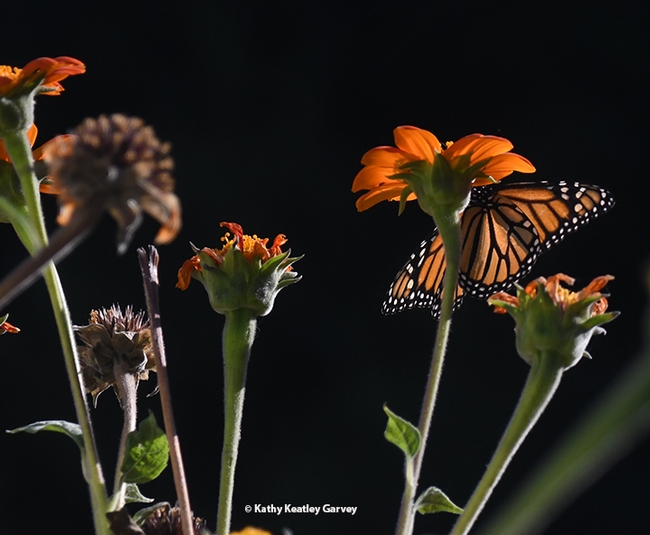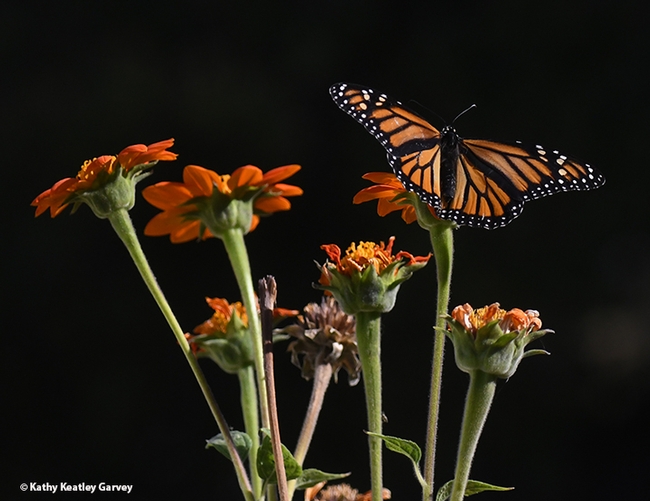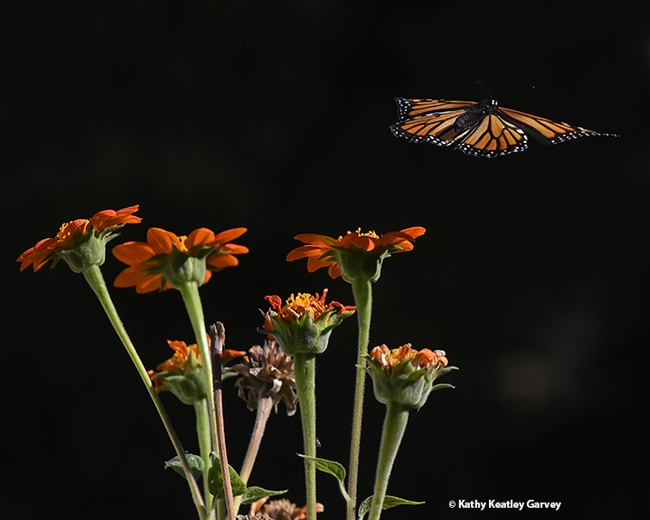Is there anything more beautiful than a monarch butterfly, Danaus plexippus, nectaring on a Mexican sunflower (Tithonia rotundifolia) in the late afternoon sun?
The brilliant orange and black butterfly, famous not only for its iconic coloration but its seasonal migration, annually stops in our yard in Vacaville to sip some fuel flight before heading to coastal California. The western monarchs (west of the Rockies) overwinter in coastal California, while the eastern monarchs overwinter in central Mexico.
It's like the king of butterflies on the queen of annuals.
How are the western monarchs faring?
Entomologist David James of Washington State University, who studies migratory monarchs and maintains a Facebook page, Monarch Butterflies in the Pacific Northwest, posted this Nov. 5:
"Early November is the time when the overwintering sites in California really begin recruiting and accumulating monarchs. By the end of this month, overwintering sites usually have the highest numbers they will have all winter and the Thanksgiving counts are conducted. Sadly, this will likely be the third year of dramatically lower counts and the numbers reported already at some of the overwintering sites bear this out. Pacific Grove reported one monarch present at the site a few days ago. They are faring better in Santa Cruz where nearly 100 were seen at Natural Bridges a few weeks ago. This week, almost 100 were seen clustering at one of the Bolinas sites. So butterflies are turning up at the sites but in very low numbers. Normally (that is, 4 or more years ago) we would expect to see many hundreds or even a few thousand at each of these sites in early November. While extremely disappointing, I believe these small numbers still have the potential to begin building the population again given the right conditions. Hopefully, the winter will be kind to the overwintering butterflies this year with no severe storms."
One thing we can do to help the monarchs on their journey to their overwintering sites is to plant nectar-rich flowers, such as Mexican sunflower or Tithonia. It's an annual and a member of the sunflower family, Asteraceae.
Tithonia is one of 10 flowers that growingorganic.com recommends you plant for monarchs. Among the others: zinnia, verbena, and of course, milkweed, their host plant. (The monarch caterpillars eat only the leaves of the milkweed, but the adults sip nectar from the blossoms.)
Tithonia rotundifola is native to Mexico and Central America and can reach 8 to 10 feet in height. Monarchs have no problem finding it!
Attached Images:

A monarch butterfly sipping nectar from a Mexican sunflower, Tithonia rotundifola, in Vacaville, Calif., on Oct. 30. (Photo by Kathy Keatley Garvey)

A monarch butterfly spreads its wings on a Mexican sunflower, Tithonia rotundifola, in Vacaville, Calif., on Oct. 30. (Photo by Kathy Keatley Garvey)

As striking as a stain glass window, the monarch takes flight. (Photo by Kathy Keatley Garvey)